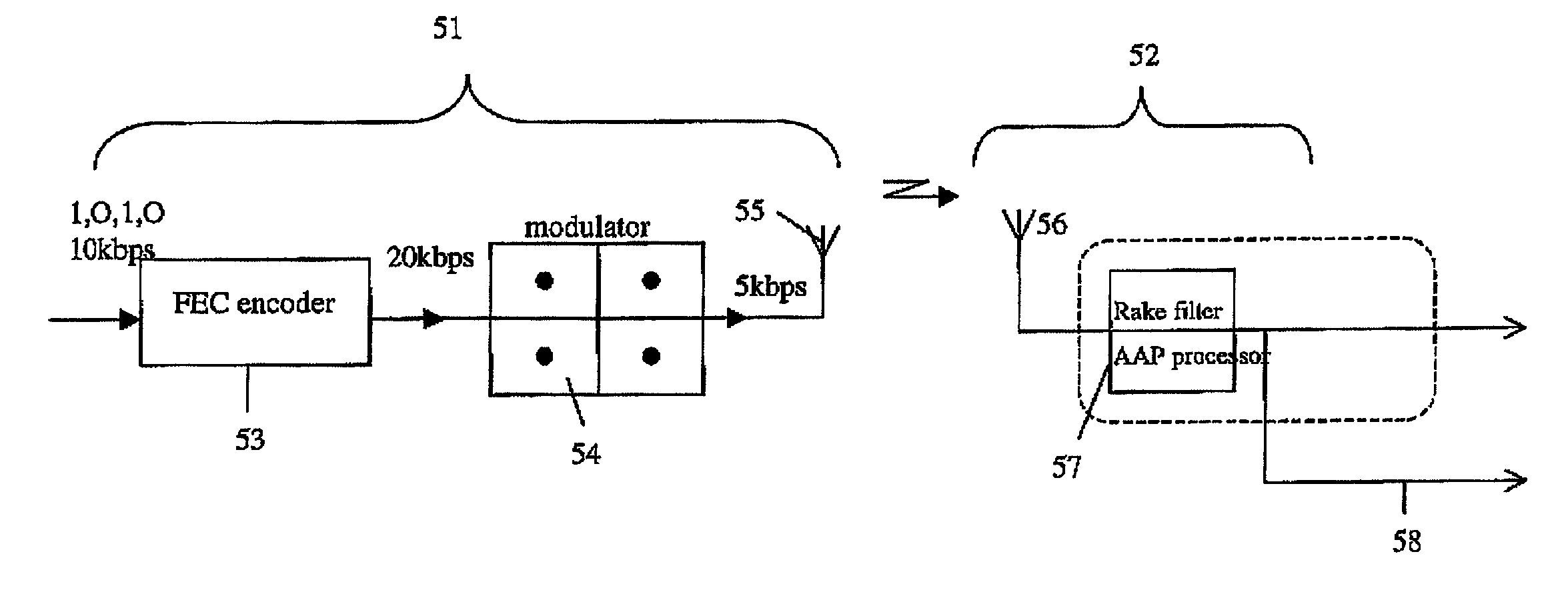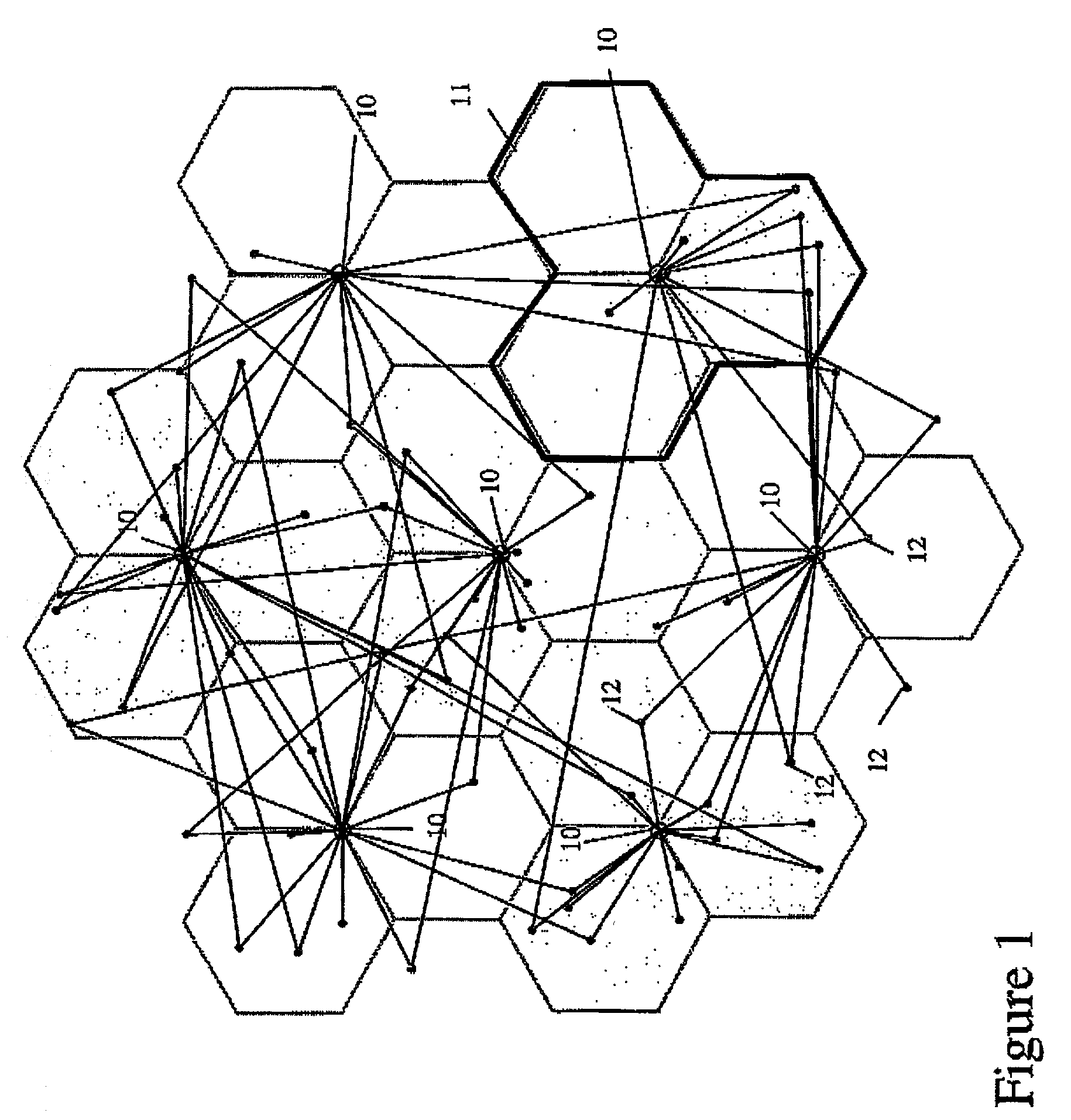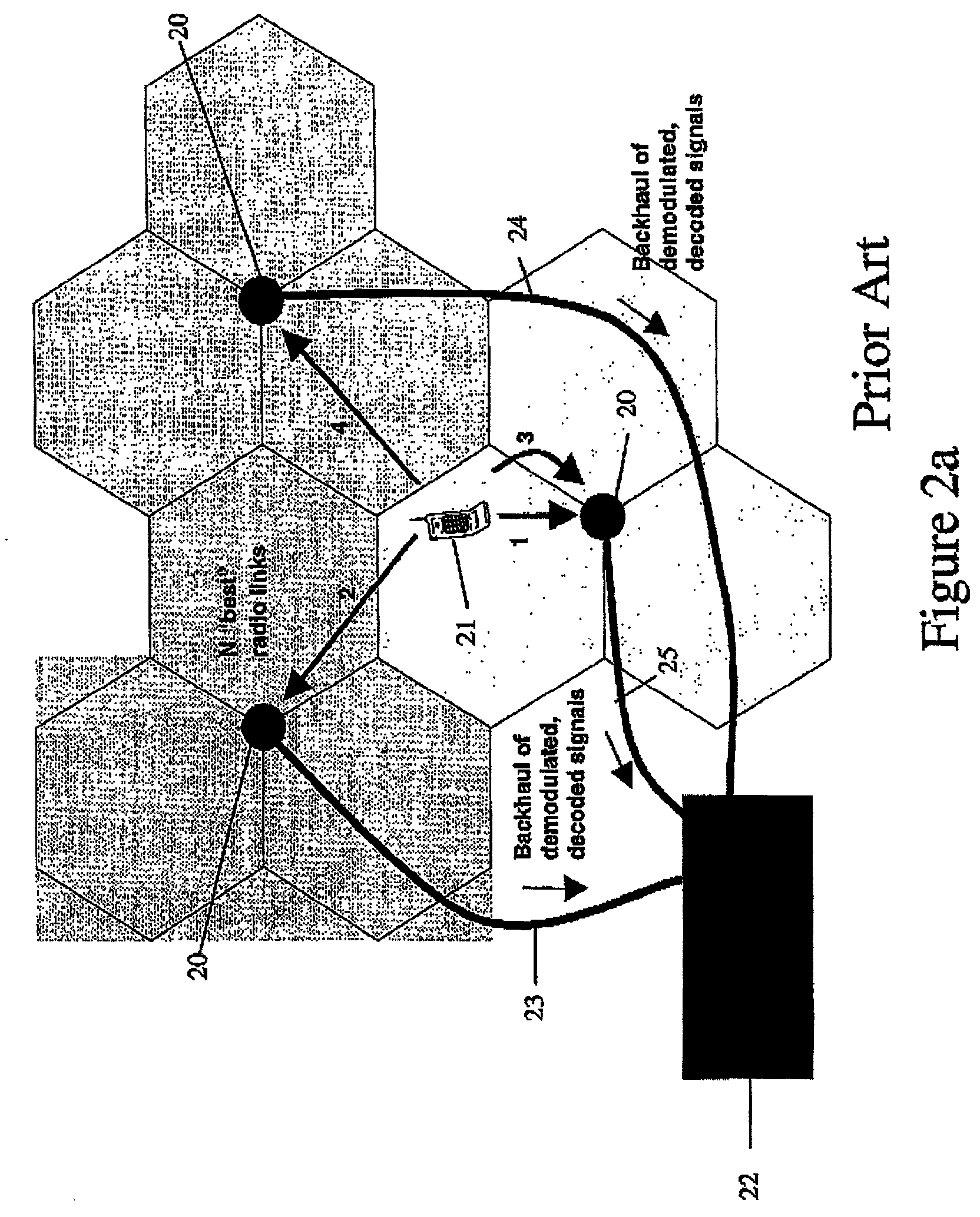Soft handoff method for uplink wireless communications
- Summary
- Abstract
- Description
- Claims
- Application Information
AI Technical Summary
Benefits of technology
Problems solved by technology
Method used
Image
Examples
Embodiment Construction
[0043] Embodiments of the present invention are described below by way of example only. These examples represent the best ways of putting the invention into practice that are currently known to the Applicant although they are not the only ways in which this could be achieved.
[0044] FIG. 2b is a schematic diagram of a wireless communications network in which improved soft-handoff is implemented according to the present invention, FIG. 2b is similar to FIG. 2a however the information that is backhauled comprises the received uplink signals before at least some of the demodulation and all of the decoding process has taken place. That is the basestations 30 do not carry out processing to fully demodulate and decode the uplink signals 1, 2, 3, 4 received from mobile telephone 21. Also, the common point 32 comprises (or is able to access) a processor in order to combine the signals received from the backhaul process (see arrows 23, 24, 26) and then to complete the demodulation process and...
PUM
 Login to View More
Login to View More Abstract
Description
Claims
Application Information
 Login to View More
Login to View More - R&D
- Intellectual Property
- Life Sciences
- Materials
- Tech Scout
- Unparalleled Data Quality
- Higher Quality Content
- 60% Fewer Hallucinations
Browse by: Latest US Patents, China's latest patents, Technical Efficacy Thesaurus, Application Domain, Technology Topic, Popular Technical Reports.
© 2025 PatSnap. All rights reserved.Legal|Privacy policy|Modern Slavery Act Transparency Statement|Sitemap|About US| Contact US: help@patsnap.com



